This guide was most recently updated on March 24th, 2020. Below are the package versions used:
- Ruby 2.7.0
- Jekyll 4.0.0
Screenshots may be outdated.
Today, we're going to look at how to host a project built with Jekyll on Netlify, including setting up continuous deployment.
Let's start from scratch. If you already have a Jekyll site set up, you can skip straight to Connecting to Netlify.
Installing Jekyll
This guide assumes you have Ruby and RubyGems installed.
Open your terminal, and enter the following command:
Use jekyll new to create a new Jekyll project that comes with everything you need:
If you run into problems at this point—like you get "jekyll: command not found"—there are more in-depth installation guides here.
Change to your new directory:
Jekyll can act as a server so that you can preview your content:
This will create a version of your site that you can access at http://localhost:4000
Like what you see? Great, let's keep going!
Preparing your project for GitHub
There are a few things you need to make sure you have before pushing your project to GitHub to make sure that your new site will play nicely with Netlify.
In the terminal, list the files in your new Jekyll project:
Confirm that you have:
- Gemfile, with this line:
gem "jekyll", "~> 4.0.0" - Gemfile.lock
If you want to change any versions in the Gemfile, just make the changes, save the file, and run:
These Gemfile and Gemfile.lock will ensure that Netlify always uses the same version of Jekyll that you used to build your site, thus avoiding any nasty surprises.
Finally, in your favorite text editor, open the .gitignore file that came with your project and make sure that it includes _site on one of the lines. With that done, you are ready to push to GitHub.
Creating your Git Repo
Create a new repository on GitHub. To avoid errors, do not initialize the new repository with README, license, or .gitignore files. You can add these files after your project has been pushed to GitHub.
Open Terminal (for Mac users) or the command prompt (for Windows and Linux users).
For our purposes, let's call your new repo "jekyll-base".
Then, back in your local terminal, initialize your Jekyll project directory as a Git repository.
Add the files in your new local repository. This stages them for the first commit.
Commit the files that you've staged in your local repository.
At the top of your GitHub repository's Quick Setup page, click the clipboard icon to copy the remote repository URL.
In your terminal, add the URL for the remote repository where your local repository will be pushed.
Verify your URL:
Now, it's time to push the changes in your local repository to GitHub.
Now that your assets are up and running on GitHub, let's connect them to Netlify.
Connecting to Netlify
Step 1: Add Your New Site

Creating a new site on Netlify is simple. Once you've logged in, you'll be taken to https://app.netlify.com/.
Step 2: Link to Your GitHub
Clicking "New Site" brings you to this screen:
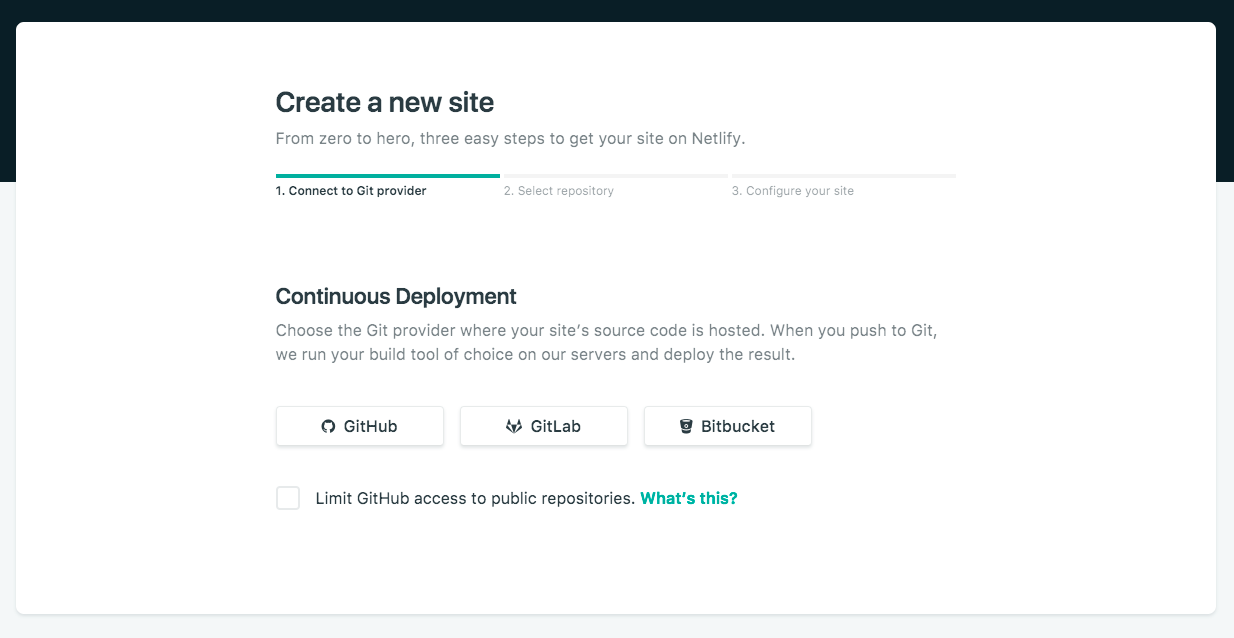
When you push to GitHub (or GitLab or BitBucket), Netlify does all the work. No more manual deploying of updates or changes!
Since your assets are hosted on your Git provider, you'll need to link Netlify to that provider. Click "Link to (your provider)".
Step 3: Authorize Netlify
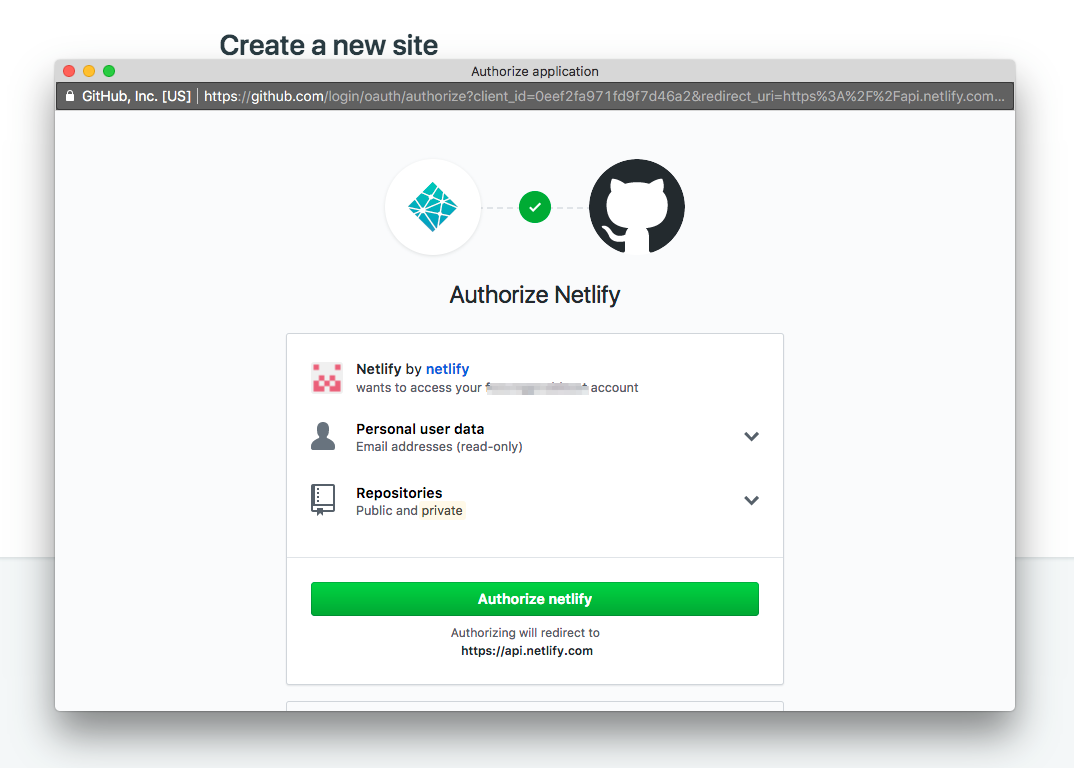
It's time to allow Netlify and GitHub to talk to each other. Clicking the "Authorize Application" button will do just that. Like it says in the image below, Netlify doesn't store your GitHub access token on our servers. If you'd like to know more about the permissions Netlify requests and why we need them, you can visit https://docs.netlify.com/configure-builds/repo-permissions-linking/.
Step 4: Choose Your Repo
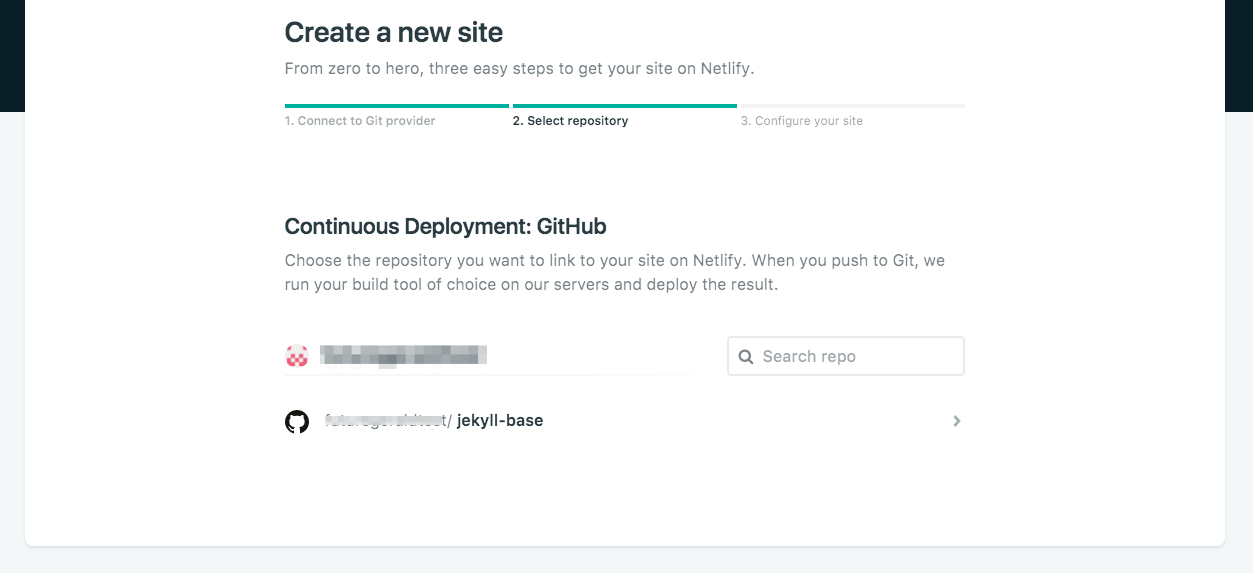
Now that you've connected Netlify and GitHub, you can see a list of your Git repos. There's the "jekyll-base" repo you just pushed to GitHub. Let's select it.
Step 5: Configure Your Settings
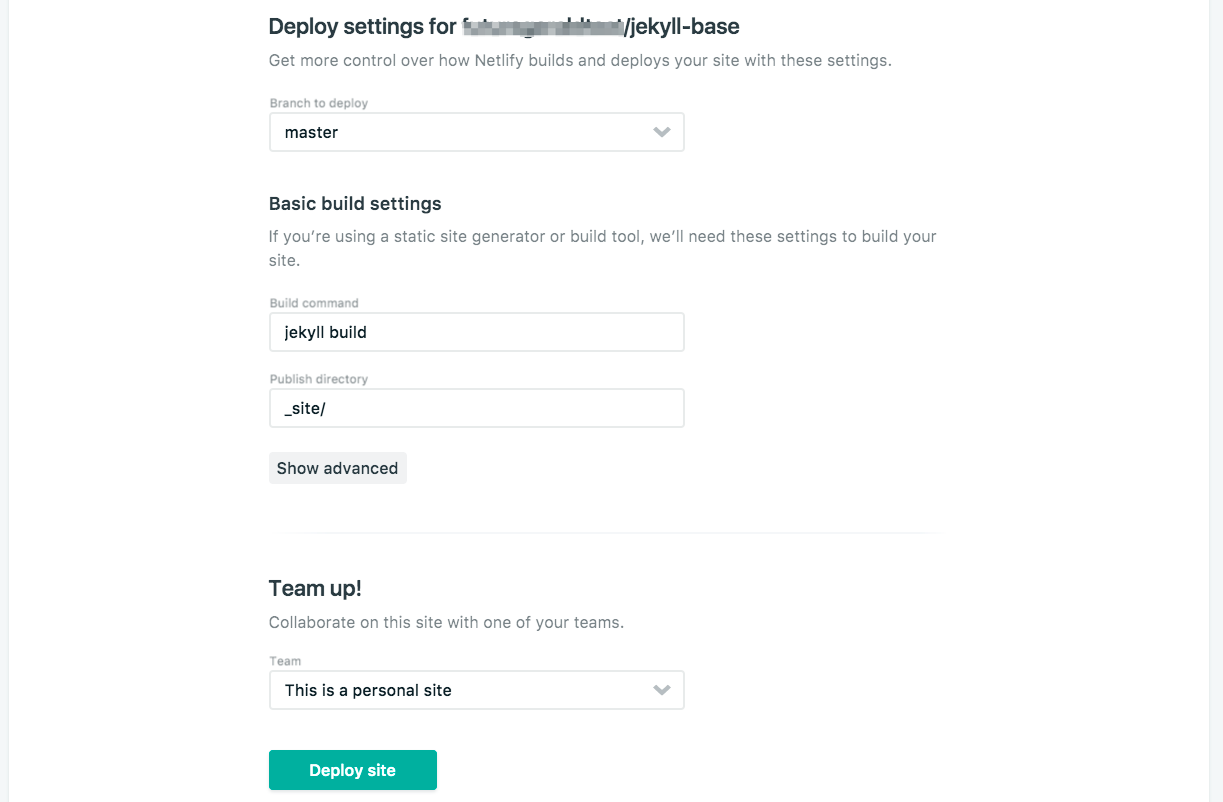
Here you can configure your options. For the purposes of this tutorial, make sure your configuration matches the screenshot, then click "Save".
Step 6: Build Your Site
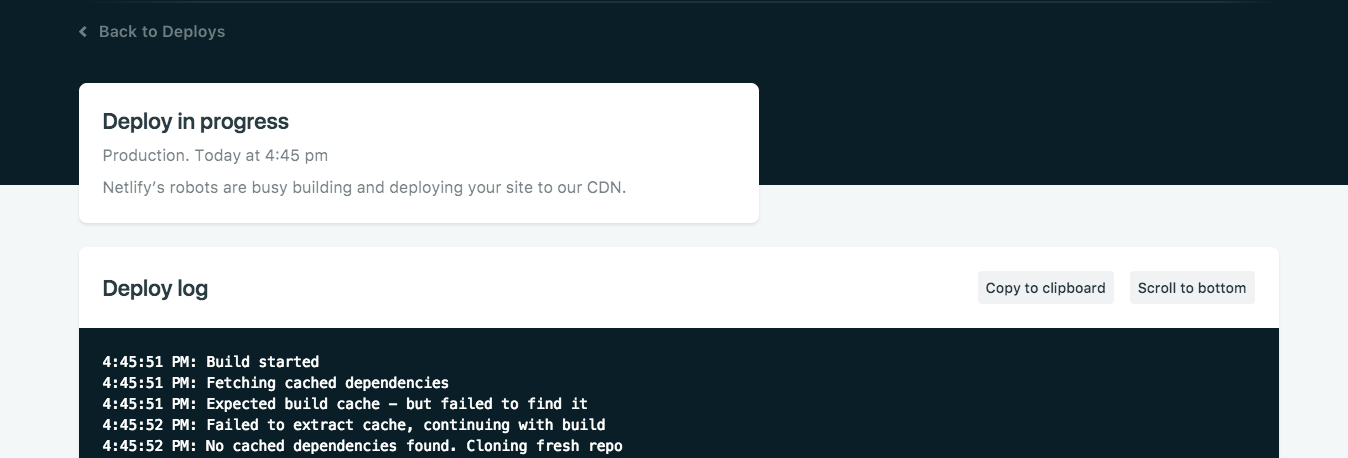
Now it's time to sit back and relax. Go grab something cold to drink, scratch the dog behind the ears, or just get up and walk around (you've probably been in front of the computer for too long today, right?). Netlify will do the rest, and you can watch the progress.
Step 7: Done
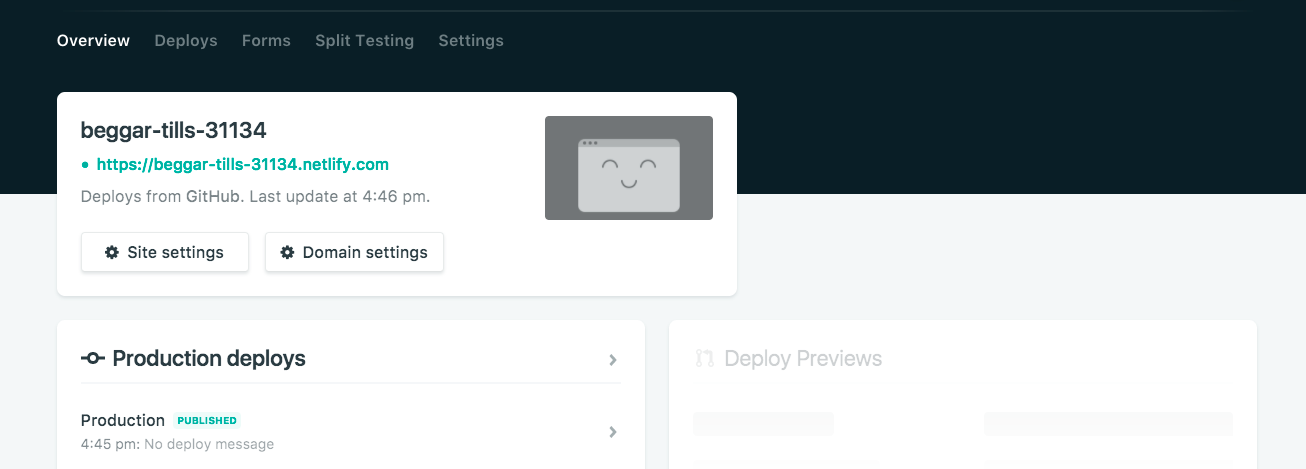
Wait, you thought there was going to be more? Nope! Netlify has done it all for you, including giving your site a temporary name. Now you can add your custom domain, and your site will be live for your adoring public to view. Congratulations, and thanks for using Netlify!

